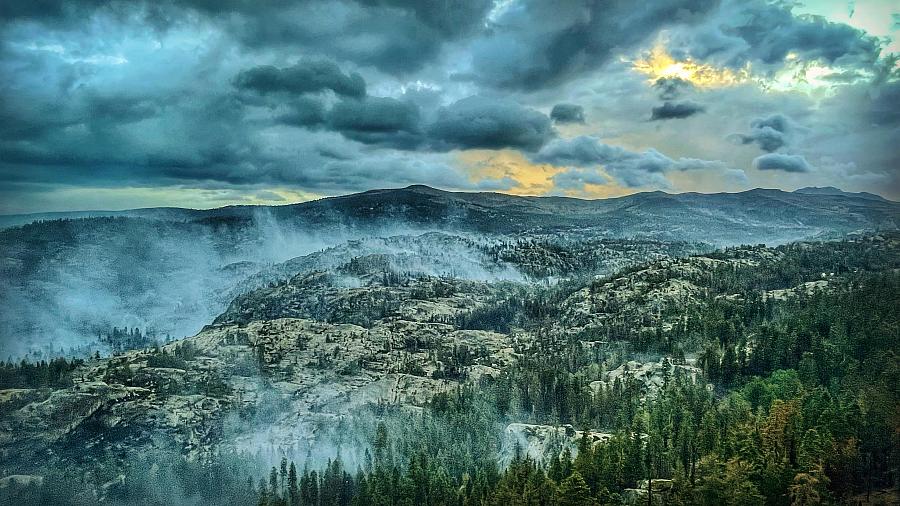Hospitals struggle to care for low-income, wildfire-stricken communities in the Sierras

Photo credit: (Photo: U.S. Forest Service)
In many small towns and rural areas, the local hospital is the backbone of the community. It’s where the community goes to see the doctor or get emergency help. It’s also where a large part of the community goes to work — the local hospital is often one of the largest employers in any community, forming one of the pillars of the local economy.
But rural hospitals are in trouble.
They serve fewer patients than urban hospitals, a larger proportion of whom tend to rely on publicly funded health insurance. Low reimbursement rates mean that a hospital can lose money on some procedures for patients on publicly funded insurance, because the programs don’t pay enough to cover the cost of performing the treatment.
People in rural areas also tend to be older, poorer and sicker, which makes them a challenging, and expensive, community to treat.
That all means that in ordinary times, rural hospitals operate in a precarious financial position. But the past few years have not been ordinary times for hospitals.
COVID-19 has had a devastating impact on many hospitals that they have not begun to recover from. Amid pandemic disruptions, rising costs and workforce shortages, the American Hospital Association, found that this year has been the most financially challenging year for hospitals since the pandemic began. The AHA estimates that more than half of all hospitals in the country are expected to operate at a financial loss through the end of this year.
This has pushed many rural hospitals over the edge.
In 2020, a record 19 rural hospitals closed their doors, according to the American Hospital Association. Since 2010, there have been 136 rural hospital closures.
Access to health care is already a challenge for rural populations, which see significantly worse health outcomes than their urban counterparts. According to the Centers for Disease Control and Prevention, rural Americans are more likely to die from heart disease, cancer, chronic lower respiratory disease and stroke than those in urban areas. Deaths by unintentional injury, which includes death from car crashes and opioid overdoses, are 50% higher in rural areas than in urban areas.
The CDC attributes a portion of this discrepancy to the disparity in access to health care — rural residents often have to travel long distances for specialty and emergency care.
I intend to examine this issue in my own community, investigating the disproportionate burdens that challenge small, independent hospitals in the Sacramento, California region. El Dorado County is a largely rural county in the Sierra Nevada served only by two small, independent hospitals — one in South Lake Tahoe and one in Placerville, a city of around 10,000 people about 40 miles from Sacramento.
These hospitals serve a diverse, relatively low-income population. Although Lake Tahoe has a reputation as a glamorous tourist destination, many of the people who live there come from historically disadvantaged communities. The median income is 32% below the statewide median income, according to Census data, and in Placerville 15% of the population lives below the poverty line.
These hospitals are also dealing with the impacts from wildfires. Last year, the Caldor Fire roared through El Dorado County, burning 221,000 acres of land, mostly within the county, and destroying more than 1,000 homes. This year, the Mosquito Fire in nearby Placer County choked much of the community with smoke so thick that public health officials classified it a health hazard.
As a 2022 Data Fellow, I plan on investigating the burden these factors have on these hospitals — whether wildfires are causing more people to seek medical treatment, and whether that poses a financial or operational burden, as well as any other health issues that are specific to the rural population they serve, and how these hospitals are coping with these financial challenges.
I hope to draw attention to this issue and the health concerns of this community, as well as explore how much help, if any, these hospitals are getting from the state and federal government, and what policy changes might help ease this issue. I am excited to take a deep dive into exploring the health issues that impact my often-overlooked community.
